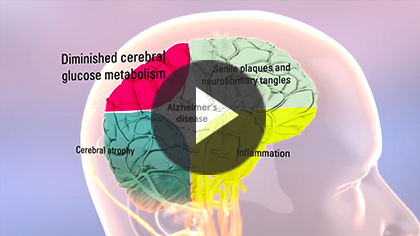Respite care helps you take a break
Taking a break and tending to your own needs doesn’t mean you have to compromise the needs of the person you’re caring for1
 Caregiving can be very demanding, so it’s important to take a break when possible. Remember that respite services can benefit you as well as the person with Alzheimer’s disease. Respite services can help you take a break from caregiving or allow you to go on vacation. They can also provide the opportunity for the person with Alzheimer’s disease to interact with others going through similar experiences and participate in activities designed to match their personal abilities and needs.
Caregiving can be very demanding, so it’s important to take a break when possible. Remember that respite services can benefit you as well as the person with Alzheimer’s disease. Respite services can help you take a break from caregiving or allow you to go on vacation. They can also provide the opportunity for the person with Alzheimer’s disease to interact with others going through similar experiences and participate in activities designed to match their personal abilities and needs.
Types of respite care1
Respite care can be provided at home or in a care setting (such as an adult day care center, nursing home, or residential facility). The duration is usually from one day to a few weeks.
- In-home services can provide companion services; assist with personal care; offer help around the house with laundry, shopping, or preparing meals; and provide skilled services to help with medication or other medical services
- Adult day care centers provide a safe environment where the person with Alzheimer’s can participate in activities such as music and art. Transportation and meals are often provided
- Residential facilities can offer the added option of an overnight stay, for up to a few days or weeks. This can allow you to take a more extended break while the person with Alzheimer’s disease is cared for in a safe environment
Cost2
Respite services charge by the number of days or weeks that services are provided. Medicare or Medicaid may cover the cost of up to 5 days in a row of respite care in an inpatient facility.
Most insurance plans do not cover these costs. You must pay all costs not covered by Medicare, Medicaid, or insurance.


